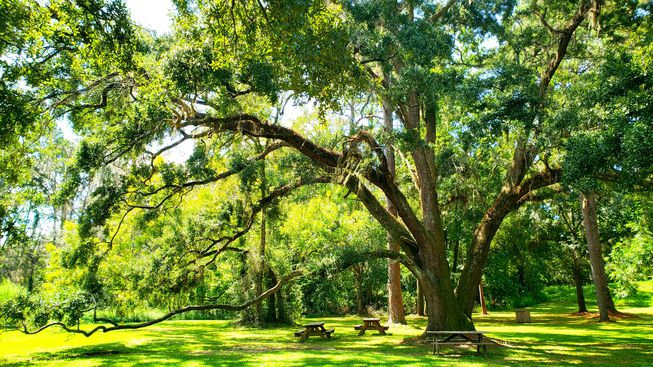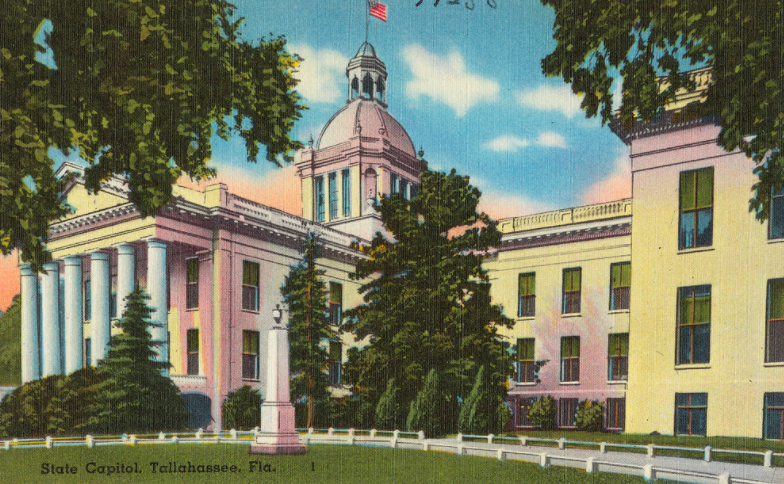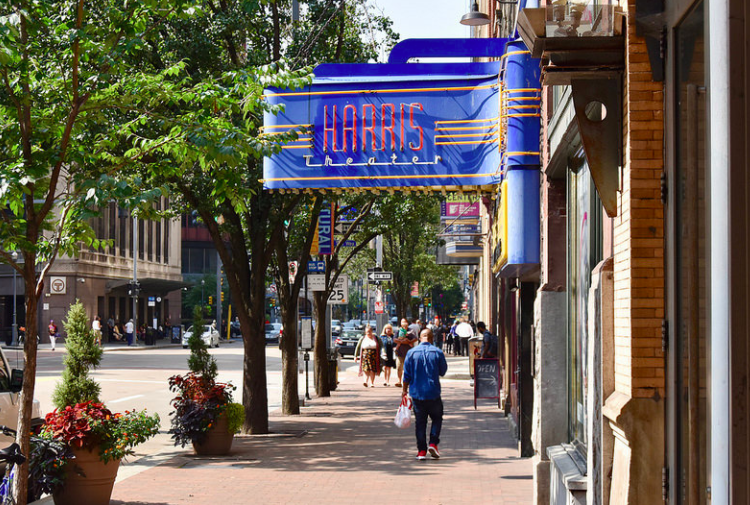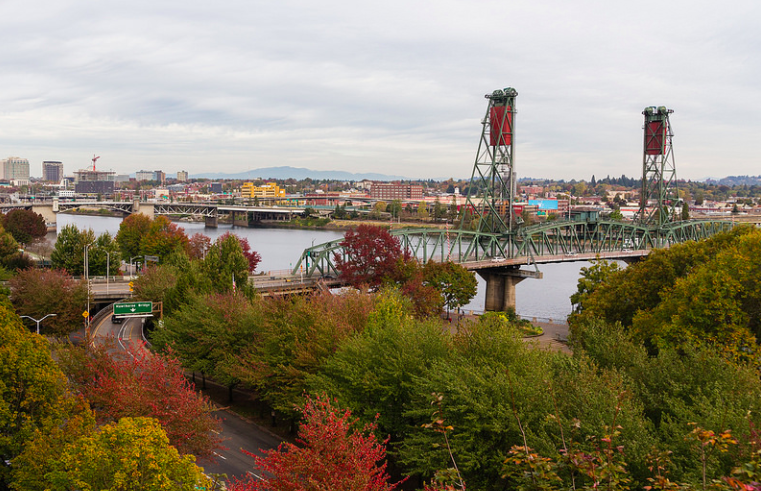随着城市的发展,对城市树木的需求也在增长
随着城市的发展,对城市树木的需求也在增长
It's easy to rattle off the necessary and wide-ranging tasks that trees perform in urban areas. They're unarguably invaluable.
我们很容易就能脱口而出树木在城市地区所执行的必要且广泛的任务。它们毋庸置疑的无价的。
Trees are air-scrubbing, temperature-cooling, mood-improving, flood-mitigating machines. And as a new study published in Lancet Planetary Health points out, they can even save lives. Just look at Philadelphia, where researchers calculated that 403 premature deaths could be prevented in that city alone, simply by meeting the city's goal to improve its urban canopy by 30%.
树木是空气洗涤、降温、改善情绪、缓解洪水的机器。发表在《柳叶刀行星健康》杂志上的一项新研究指出,它们甚至可以拯救生命。看看费城,研究人员计算出,仅在该市就可以避免403例过早死亡,只要达到该市提高30%城市冠层的目标即可。

Tallahassee is the most heavily forested urban area, and it's the capital of the state with largest number of urban trees. This gorgeous specimen is at Lake Jackson Mounds Archeological Site inside the city limits. (Photo: Benevolent Medley/Shutterstock.com)
Urban trees are obviously worth a lot. But how much?
城市树木显然价值不菲,但到底值多少钱呢?
According to a comprehensive study from U.S. Forest Service's Northern Research Station, the nation's urban canopies, which are home to an estimated 5.5 billion trees, provide roughly $18 billion in annual benefits to society through the removal of pollution from the air ($5.4 billion), carbon sequestration ($4.8 billion), reduced emissions ($2.7 billion) and improved energy efficiency in buildings ($5.4 billion).
根据美国林务局北方研究站的一项综合研究,美国城市估计有55亿棵树,每年通过消除空气污染(54亿美元)、碳封存(48亿美元)、减少排放(27亿美元)和提高建筑能效(54亿美元)为社会提供大约180亿美元的效益。
Five states are particularly bankable when it comes to the economic perks associated with urban trees, per the Forest Service's findings. Florida leads the way with roughly $2 billion in annual savings while California, Pennsylvania, New York and Ohio follow in the ballpark of $1 billion of value per year. This doesn't mean, however, that these states necessarily have the most urban trees. Georgia, for example, has more urban trees (372 million) than California (343 million) while North Carolina (320 million) and Texas (309 million) both have more urban trees than Pennsylvania, New York and Ohio. Florida, which indeed has the most urban trees with an estimated 407 million leafy specimens, remains the most valuable.
根据林务局的调查结果,当提到与城市树木相关的经济福利时,五个州尤其值得投资。佛罗里达州以每年大约20亿美元的储蓄而居首位,而加利福尼亚州、宾夕法尼亚州、纽约州和俄亥俄州紧随其后,每年大约有10亿美元的储蓄。然而,这并不意味着这些州一定拥有最多的城市树木。例如,佐治亚州的城市树木(3.72亿棵)比加利福尼亚州(3.43亿棵)多,而北卡罗来纳州(3.2亿棵)和得克萨斯州(3.09亿棵)的城市树木都比宾夕法尼亚州、纽约州和俄亥俄州多。佛罗里达拥有最多的城市树木,估计有4.07亿棵树叶,仍然是最有价值的。

Trees have long played a prominent role in the landscape of Florida's capital city. (Photo: Boston Public Library [CC BY 2.0]/Flickr)
It's true. Florida has more urban trees than any other state. In fact, Tallahassee is among America's most tree-blessed cities with 55 percent total tree coverage — that's the highest percentage of any comparable city. (Interestingly, Tallahassee's arboreal claim to fame sprung from tragedy: In 1843, a catastrophic fire leveled large swaths of Florida's capital city. In addition to fire safety, one of the top imperatives when rebuilding Tallahassee was not only replacing the urban canopy that was lost but adding to it.)
这是真的。佛罗里达州的城市树木比其他任何一个州都多。事实上,塔拉哈西是美国树木覆盖率最高的城市之一,树木覆盖率达55%,是所有可比城市中最高的。(有趣的是,塔拉哈西在树下的成名源于一场悲剧:1843年,一场灾难性的大火将佛罗里达州首府的大片地区夷为平地。除了消防安全之外,重建塔拉哈西的首要任务之一,不仅是替换掉失去的城市天篷,而且还要增加天篷。)
The Sunshine State's hugely beneficial — not to mention somewhat surprising — urban lushness aside, the Forest Service study stresses the importance of preserving, protecting and planting city-dwelling trees in states where the amount of urban land area is expected to grow exponentially.
除了这个阳光之州的巨大好处——更不要提它的一些令人惊讶之处——城市繁茂之外,林务局的研究还强调了在城市土地面积预计将呈指数增长的州,保护、保护和种植城市树木的重要性。

Pennsylvania is home to some seriously high-value urban trees, like these on a Pittsburgh street. The Keystone State set to experience some of the highest urban land growth in the coming decades. (Photo: Nick Amoscato [CC BY 2.0]/Flickr)
States with the highest percentage of urban land overall consist of the nation's densest and most diminutive states, all of them located in the Mid-Atlantic and Northeast: Rhode Island (35 percent), Delaware (29 percent), Connecticut (28 percent), Massachusetts (23 percent) and New Jersey (23 percent). It's in these highly urbanized locales where the Forest Service notes that the "impact of current urban forests is likely greatest due to the relatively large proportion of urban land."
城市用地比例最高的州包括美国人口密度最大、面积最小的几个州,它们都位于大西洋中部和东北部:罗德岛(35%)、特拉华州(29%)、康涅狄格州(28%)、马萨诸塞州(23%)和新泽西州(23%)。森林服务指出,正是在这些高度城市化的地区,“由于城市土地的比例相对较大,当前城市森林的影响可能最大。”
Previous studies conducted within a 10-year period (2000 to 2010) found that the amount of urban land jumped from 2.6 percent (57.9 million acres) to 3 percent (68 million acres). States that experienced the highest amount of urbanization during this time were largely limited to the South and Southeast.
此前在10年(2000年至2010年)内进行的研究发现,城市土地面积从2.6%(5790万英亩)跃升至3%(6800万英亩)。在这段时间内城市化程度最高的州主要集中在南部和东南部。

When it comes to urban tree value, typically woodsy states like Oregon (pictured here in Portland) aren't as high-ranking as you might think. (Photo: Jonathan Miske [CC BY-SA 2.0]/Flickr)
Not surprisingly, the states with the lowest value of urban trees are the ones where cities are small or far and few between, even though the states in question might be impressively forested: North Dakota, South Dakota, Wyoming, Montana and Idaho. For example, the value of North Dakota's urban trees when it comes to sequestering carbon, removing pollution, curbing emissions and reducing energy use was $7.3 million annually compared to the $1 billion-plus figures claimed by the top five states. Still, not too shabby for a sparsely populated state that's largest city, Fargo, boasts a population just north of 100,000.
毫不奇怪,城市树木价值最低的州是那些城市规模小或距离远,城市之间很少的州,尽管这些州可能是令人印象深刻的森林覆盖州:北达科他州、南达科他州、怀俄明州、蒙大拿州和爱达荷州。例如,北达科他州的城市树木在吸收碳、消除污染、控制排放和减少能源使用方面的价值是每年730万美元,而排名前五的州每年的价值超过10亿美元。尽管如此,对于人口稀少的州来说,最大的城市法戈(Fargo)不算太破旧,它的人口只有10万多一点。
States with large and heavily urbanized metro areas that are often thought of as being "woodsy" like Washington, Oregon and Colorado have urban trees that provide annual benefits amounting to $328 million, $136 million and $40 million, respectively. (I would have figured the amounts to be higher for these states.)
像华盛顿州、俄勒冈州和科罗拉多州这样大都市区面积大、城市化程度高、通常被认为是“森林”的州,其城市树木每年提供的效益分别为3.28亿美元、1.36亿美元和4000万美元。(我本以为这些州的数字会更高。)
- 频道推荐
- |
- 全站推荐
- 推荐下载
- 网站推荐


















